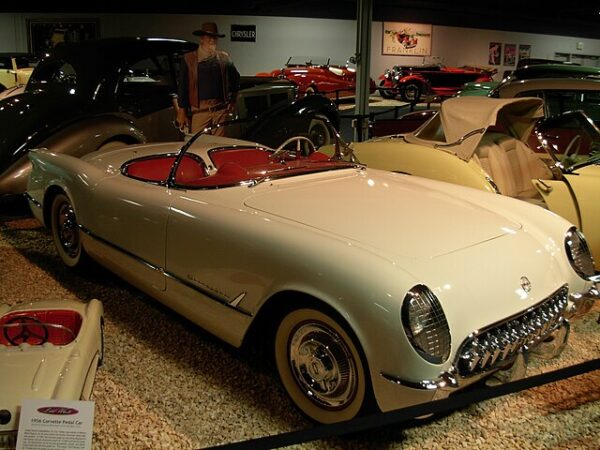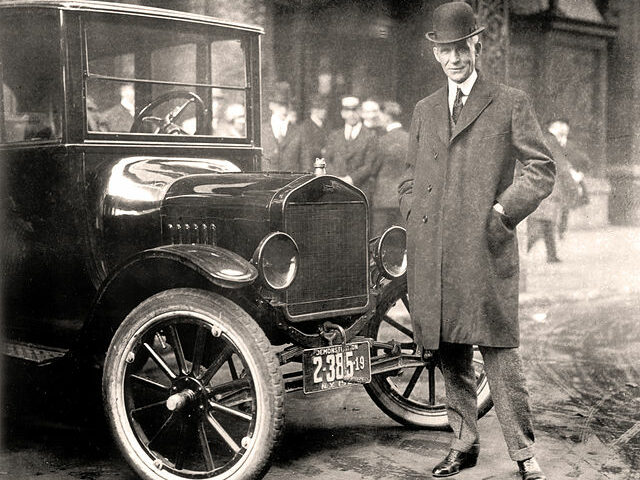The Chevrolet Corvette, often called “America’s Sports Car,” began thrilling Americans with a need for speed when it began rolling off the assembly line on June 20, 1953.
The original model was a hand-built convertible with a fiberglass body and a 150-horsepower inline-six engine. Designed by Harley Earl, the C1 (first generation) Corvette initially struggled with sales but gained popularity after the introduction of a V8 engine in 1955. This first generation lasted until 1962 and established the Corvette as a symbol of American performance.
The second generation, known as the C2, was produced from 1963 to 1967 and introduced the Sting Ray name. This generation featured a new chassis and independent rear suspension, enhancing handling and performance. The 1963 model year is particularly notable for its split rear window design, which became iconic. The C2’s powerful V8 engines, such as the 427 cubic inch, cemented its reputation as a high-performance car.
From 1968 to 1982, the third generation (C3) Corvette adopted a more aggressive, aerodynamic design and was known for its “shark” styling. This generation faced challenges from tightening emissions regulations and the fuel crisis of the 1970s but managed to maintain its performance credentials. Key features included T-top removable roof panels and increasingly luxurious interiors. The C3 also introduced special editions like the 25th Anniversary model and the pace car replicas.
The fourth generation (C4), produced from 1984 to 1996, marked a significant technological leap with advanced suspension, digital instrumentation, and improved aerodynamics. The introduction of the ZR-1 in 1990, with its 375-horsepower LT5 engine developed with Lotus, showcased the Corvette’s technological advancements. The C4 also brought back the Grand Sport nameplate in 1996 with a limited-production model celebrating the end of the generation.
The C5 generation, produced from 1997 to 2004, was a complete redesign, featuring a new hydroformed box frame that increased rigidity while reducing weight. The C5’s LS1 V8 engine produced 345 horsepower, offering exceptional performance. The Z06 model, introduced in 2001, further enhanced the car’s performance with a 405-horsepower LS6 engine, solidifying the Corvette’s status as a top-tier sports car.
The sixth generation (C6), produced from 2005 to 2013, continued the trend of technological advancements, including keyless entry, push-button start, and a refined interior. The C6 ZR1, introduced in 2009, was the most powerful production Corvette at the time, boasting a supercharged 6.2-liter V8 engine with 638 horsepower. The C6 also saw the return of the Grand Sport model in 2010, combining performance with distinctive styling.
The seventh generation (C7), produced from 2014 to 2019, reintroduced the Stingray name and featured a more aggressive design with improved aerodynamics. The C7’s advanced technology included a configurable digital dashboard and a heads-up display. The Z06 model returned with a supercharged 6.2-liter V8 engine producing 650 horsepower, making it one of the most powerful Corvettes ever. The C7 marked the end of the front-engine Corvettes, paving the way for a new era.
The eighth generation (C8), debuting in 2020, represented a radical departure with a mid-engine layout. This configuration provided unprecedented balance and performance. The C8 Corvette’s LT2 V8 engine delivers 495 horsepower, making it the most powerful base model in Corvette history. The C8’s design and engineering innovations reflect Chevrolet’s commitment to pushing the boundaries of performance and technology.






